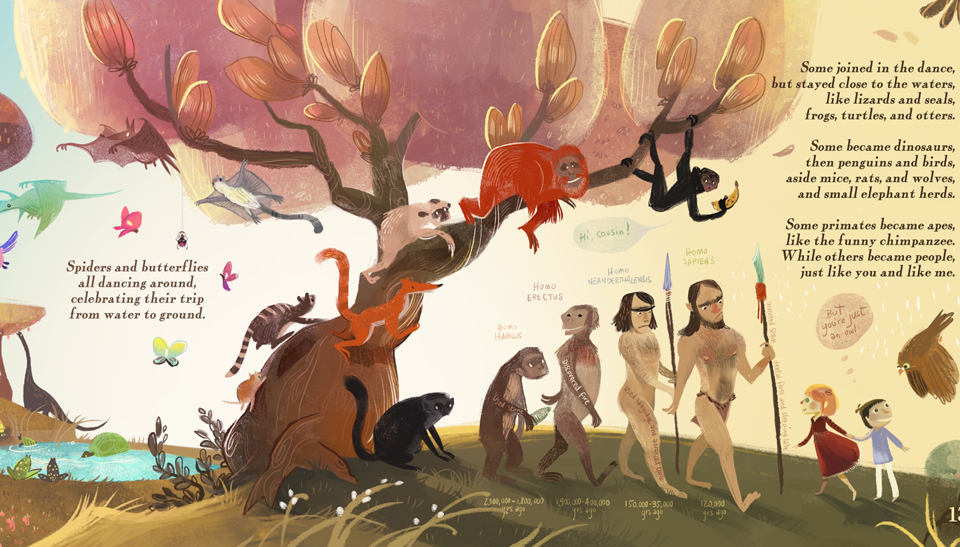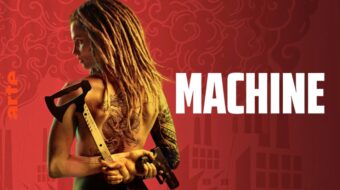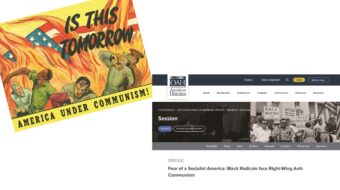
LAS VEGAS, Nev.—Annabelle and Aiden are civil rights lawyer and author J. R. Becker’s two young children. Annabelle & Aiden is a new children’s book series aimed at countering superstition and misinformation in young people’s minds. Becker presented an introduction to his work at the recent (May 17-20) American Humanist Association Conference here.
The fourth book in the series, all illustrated by Max Rambaldi with details kids will have fun discovering, appears this summer. It’s called What Happens When We Die? With a little help from their friends Skeptisaurus and Tardigrade Tom, the two protagonists learn
“how our atoms rejoin the universe, which remains forever changed by our lives. How our energy lasts forever, along with the stories of our loved ones we keep alive by honoring their memories. And most of all, how mortality can inspire us to appreciate the incredible opportunity we’ve been given: to live the best, most meaningful lives we can, surrounded by the people we love.”
That sounds quite different from an afterlife of sweets and toys and carnival rides (if you’re a kid), or hymns, harps and hallelujahs in some people’s idea of heaven.
That’s because Becker is a Humanist who prefers to inspire scientific wonder and critical thinking. “Children are our future problem solvers,” he says, “and problems stem from ignorance.”
Becker did not always think that way. He grew up in an Orthodox Jewish environment where life was “full of rules.” Early on he realized he had a skeptical streak, and after he discovered philosophy in college he concluded that “we should be most skeptical of our own beliefs.” As he shed his religious indoctrination, he felt drawn more and more to scientific inquiry. “Reality is enough,” he explains. Let us “celebrate what we know.”
The forthcoming installment in the series “creates a space for children to reconcile their emerging understanding of the world with their own rich fantasy lives,” writes Justin Schleifer, child psychiatrist at Brown University—“necessary for children tackling one of life’s most challenging moments: its end.”
The first three titles include The Story of Life, about evolution; Oh, The Things We Believed! about critical thinking; and Worlds Within Us, about the big bang and the earliest stages of the universe. The texts consist of charming little rhyming poems, while other factual information is more faintly incorporated into the pictures. Designed for children from 5 to 12, these books are conceived in such a way that the older the readers are, or the more times they have looked at the text, the more will leap off the page and grab their attention, especially as their reading skills mature.
Interestingly, Becker says, he and Rambaldi, who lives in Italy, have never met in person. Their collaboration has flourished entirely over the Internet.
In The Story of Life, Becker has Annabelle posing life’s challenging questions and Aiden producing naïve and simplistic answers, subtly reversing the presumptive male hegemony of knowledge that infects the larger culture around us. Life begins deep in the ocean as “an itty bitty thing” that “looked all around, and what did it see?” This primordial thing—a one-celled life form—saw “A beautiful world of / earth, water, and stone. / There was so much to share, / but it was all alone.”
So it spun off “a perfect copy of itself,” creating “a new friend and mate.” From this narrative some might read a scientific version of the Adam and Eve story. Already from the beginning we see that the world can be a place of cooperation, not competition. Gradually, random variations creep in and what we recognize as Darwinian adaptation sets in: “Those with helpful changes / could make babies of their own / a lot more than the others / who were more and more alone.”
“Some mouths became beaks / that could dig in the sand. / Some fins became legs / that could walk on the land.” After sea creatures come insects and mammals: “Some became dinosaurs, / then penguins and birds, / aside mice, rats, and wolves, / and small elephant herds. / Some primates became apes, / like the funny chimpanzee. / While others became people, just like you and me.”
Becker introduces concepts such as fossils, genes and DNA to tell the story of evolution. For proof, he says, “People still have tail bones / you can feel with your hand!” “Our wisdom teeth and goosebumps, / and the way we wiggle our ears, / are just a few of the countless clues / that tell us how we got here.”
Perhaps to Darwin the evolutionary process was random and had no inherent moral purpose. But Becker draws certain conclusions from the saga of life: “We all share the same story. / So what does this mean? / Just take a small look / at our family tree. / It reminds us to be kind, / and to treat each other well. /That we are all connected, / and together we must dwell.”
The two-page graphic shows a globe surrounded by mostly young people of a variety of races and ethnicities. “This world belongs to all of us, / equally to share. / To hold hands together, / as we breathe the same air.”
A final note to parents in small, unillustrated script educates further on evolution as the cornerstone of biology. Becker’s forty lines of text are printed in graduated rainbow colors, perhaps subtly meant to imply that as kids encounter the rainbow symbol for the LGBTQ+ community, they will accept such variation in the human experience as a normal part of life.
The back cover of The Story of Life comes with a WARNING! to potential buyers: “This book may cause children to develop curiosity, wonder, a thirst for knowledge, critical thinking skills, and a love for our planet and fellow creatures.” No wonder it was condemned by Christian News—and went on to become a #1 bestseller in the category for children’s prehistoric books on Amazon! According to that source, “evolutionists are increasingly targeting young children in their campaign to spread Darwinian mantra.”
For more information about this series, visit the website here.












Comments